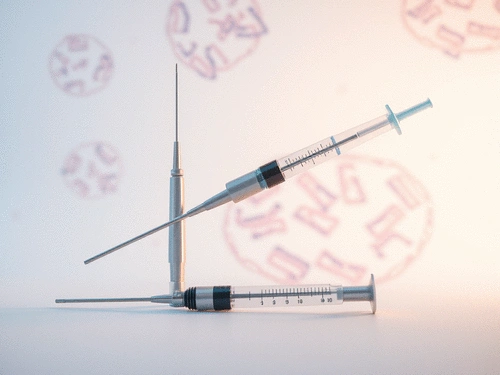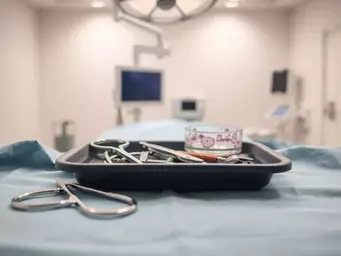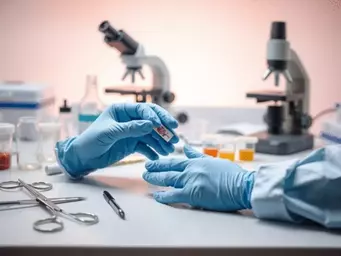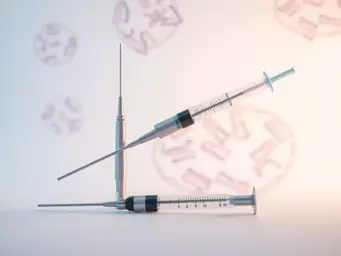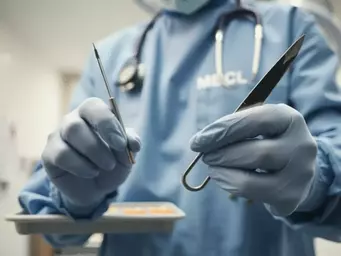When it comes to understanding biopsy procedures, clarity can make all the difference. Knowing the nuances between Core Needle Biopsy (CNB) and Fine Needle Aspiration (FNA) empowers patients to make informed healthcare choices. Here are the essential insights you’ll gain:
What You Will Learn
- CNB provides larger tissue samples, enhancing diagnostic accuracy, particularly for complex cases.
- FNA is a quicker, less invasive option with minimal recovery time and lower complication risks.
- Core Needle Biopsy is often used for tumors, while Fine Needle Aspiration is suitable for easily accessible masses.
- Engaging in open conversations with your healthcare provider can clarify which biopsy method is best for your needs.
Core Needle Biopsy vs. Fine Needle Aspiration: A Comparative Overview
This visual highlights the key differences and applications of Core Needle Biopsy (CNB) and Fine Needle Aspiration (FNA), two common diagnostic procedures.
Core Needle Biopsy (CNB)
Method: Larger, hollow needle extracts a core of tissue.
Sample: More extensive, preserves tissue architecture.
Invasiveness: More invasive than FNA.
Primary Use: Suspected tumors (breast, lung, prostate) requiring detailed assessment.
Fine Needle Aspiration (FNA)
Method: Thinner needle collects fluid or cells.
Sample: Smaller, primarily cellular material.
Invasiveness: Minimally invasive, quicker procedure.
Primary Use: Evaluating superficial masses (thyroid nodules, lymph nodes, cysts).
Understanding Core Needle Biopsy and Fine Needle Aspiration
When discussing biopsy procedures, it's essential to grasp the differences between Core Needle Biopsy (CNB) and Fine Needle Aspiration (FNA). Both techniques are valuable for obtaining tissue samples, but they serve distinct purposes and have unique methodologies. In my experience as a pathologist, I’ve seen how understanding these differences can significantly impact patient outcomes.
Let’s break down each procedure to clarify what they entail and when they’re used. Knowing the ins and outs can alleviate some common fears associated with these procedures!
Defining Core Needle Biopsy: Procedures and Applications
A Core Needle Biopsy (CNB) involves using a larger, hollow needle to extract a core of tissue from a specific area. This technique allows for a more extensive sample compared to FNA, which is critical for certain diagnostic needs. In my practice, CNB is often preferred when a more substantial tissue sample is necessary, especially for conditions like suspected tumors.
- Uses in Oncology: CNB is frequently used in breast, lung, and prostate biopsies.
- Better Tissue Architecture: The larger sample provides more information about the tissue structure, which is crucial for accurate diagnosis.
- Post-Procedure Analysis: Samples taken through CNB are often sent for histopathological examination to confirm or rule out malignancies.
In essence, CNB is invaluable when a detailed assessment is required. Its ability to provide more comprehensive insights helps reduce the need for repeat biopsies, which can be a source of anxiety for patients. For further understanding of biopsy accuracy, you can refer to research on the accuracy of biopsy in diagnosing various conditions.
What is Fine Needle Aspiration? Key Characteristics
Fine Needle Aspiration (FNA), on the other hand, utilizes a much thinner needle to collect fluid or tissue samples. This technique is less invasive, making it a preferred option for many patients who may be anxious about more involved procedures. While the samples obtained may be smaller, FNA can still yield significant diagnostic information.
- Quick and Minimally Invasive: The procedure is usually quick, often taking less than 15 minutes.
- Lower Risk of Complications: FNA is associated with fewer complications due to its minimally invasive nature.
- Real-Time Results: In some cases, results can be available within days, providing quick answers for patients.
FNA is particularly effective for evaluating superficial masses, such as thyroid nodules or lymph nodes. I often reassure my patients that while the sample may be smaller, advancements in cytopathology allow us to glean essential information from these specimens. For detailed information on FNA procedures, the Cleveland Clinic provides comprehensive insights into fine needle aspiration.
Breast Biopsy: Specific Applications of Needle Techniques
When it comes to breast biopsies, both CNB and FNA have their specific applications. In my field, understanding when to utilize each technique can significantly enhance diagnostic accuracy and patient comfort.
- Core Needle Biopsy in Breast Conditions: CNB is commonly used when a suspicious mass is detected on a mammogram or ultrasound. It provides a larger sample that can reveal more about the tumor's characteristics.
- Fine Needle Aspiration for Cysts: FNA is often used to evaluate fluid-filled cysts in the breast, helping to determine if further intervention is necessary.
- Follow-Up Testing: Depending on the initial findings, either CNB or FNA may lead to further testing or monitoring, allowing for tailored patient care.
Both methods play crucial roles in breast health, and I strive to educate my patients on what to expect from these procedures and how they can contribute to their overall treatment plans. For instance, recent studies highlight the utility of FNA in diagnosing thyroid nodules, showcasing its diagnostic power even for smaller samples.
Pro Tip
Consider keeping a journal of your experiences and questions leading up to your biopsy. This can help you articulate your concerns during discussions with your healthcare provider, ensuring you receive the most tailored advice and support. Remember, being proactive in your healthcare journey can enhance your understanding and comfort with the procedures ahead.
Key Takeaways on Core Needle Biopsy vs. Fine Needle Aspiration
Understanding the nuances between Core Needle Biopsy (CNB) and Fine Needle Aspiration (FNA) can significantly impact your healthcare choices. Both procedures are valuable for diagnosing conditions, but they offer different benefits and drawbacks. Here’s a summary of the key points to consider:
- Accuracy: CNB generally provides more tissue, leading to higher diagnostic accuracy, especially for complex cases.
- Invasiveness: FNA is less invasive, often requiring only a small needle and minimal recovery time.
- Appropriate Use: CNB is preferred when larger samples are necessary, while FNA is suitable for certain masses that are easily accessible.
When it comes to making a choice, it’s crucial to balance these factors based on your specific medical needs. Consulting with your healthcare provider can help clarify which method is best suited for your situation!
Guidance for Patients and Clinicians on Biopsy Choices
Choosing between CNB and FNA can be daunting, but as a patient, you have vital roles to play in this decision-making process. Engaging in open conversations with your healthcare provider is essential. Here are some guiding questions to consider:
- What is the reason for the biopsy, and what information are we trying to obtain?
- Can you explain the differences in recovery time between CNB and FNA?
- What are the potential risks or complications associated with each procedure?
- How will the choice of biopsy technique influence my treatment options?
These questions not only clarify the benefits of each method but also empower you to be actively involved in your healthcare journey. Remember, knowledge is power, and being informed can lead to a more confident decision!
Frequently Asked Questions (FAQs)
Q: What is the primary difference between a Core Needle Biopsy (CNB) and a Fine Needle Aspiration (FNA)?
A: CNB uses a larger, hollow needle to extract a core of tissue, providing a more extensive sample with preserved tissue architecture, ideal for detailed assessments of suspected tumors. FNA uses a thinner needle to collect fluid or cells, making it less invasive and quicker, suitable for evaluating superficial masses or cysts.
Q: When is a Core Needle Biopsy (CNB) typically recommended?
A: CNB is often recommended for suspected tumors in areas like the breast, lung, or prostate, where a larger tissue sample is needed to understand the tissue structure and confirm or rule out malignancies.
Q: What are the advantages of Fine Needle Aspiration (FNA)?
A: FNA is minimally invasive, generally quicker (often less than 15 minutes), and has a lower risk of complications. It can also provide rapid results, sometimes within days, for conditions like thyroid nodules or lymph nodes.
Q: Can both CNB and FNA be used for breast biopsies?
A: Yes, both are used for breast biopsies. CNB is commonly used for suspicious solid masses to provide a larger sample for detailed analysis, while FNA is often used to evaluate fluid-filled cysts in the breast.
Q: What questions should I ask my healthcare provider about my biopsy options?
A: You should ask about the reason for the biopsy, the differences in recovery time between options, potential risks or complications, and how the chosen technique will influence your treatment options. This helps ensure you are an informed partner in your healthcare decisions.
Engaging with Your Healthcare Provider
Questions to Ask About Your Biopsy Options
Once you've gathered information, it’s time to engage with your healthcare provider. Don’t hesitate to ask specific questions about the biopsy options available to you. Here are some essential questions to guide your discussion:
- What type of biopsy do you recommend for my condition, and why?
- What can I expect during the procedure, including any discomfort?
- What are the expected outcomes in terms of diagnosis and next steps?
- How experienced are you with the recommended biopsy technique?
Asking these questions ensures you're not just a passive recipient of care but an informed partner in your health decisions! It’s all about working together for your best outcome.
Resources for Further Information and Support
For more information about your biopsy options, don’t forget to explore additional resources. There are many trustworthy platforms, including our own What Is A Biopsy, which provides educational articles, animations, and guides designed to demystify biopsy procedures!
Additionally, consider the following resources:
- National Cancer Institute: Offers comprehensive information on various biopsy types.
- American Society of Clinical Oncology: Provides patient education materials.
- Your local health center: Many have resources and support groups for patients undergoing biopsies.
By utilizing these resources, you can further enhance your understanding of biopsy procedures and feel more prepared as you navigate your healthcare journey.
Understanding Histopathology and Cytopathology: What Patients Should Know
As you prepare for a biopsy, it’s also useful to be familiar with terms like histopathology and cytopathology. These fields focus on studying tissue samples and cellular material, respectively, to diagnose diseases. Knowing that your biopsy results will be interpreted by pathologists can provide reassurance. They are experts in identifying abnormalities within those samples, helping to guide your treatment plan.
Remember, being informed is a journey, and we at What Is A Biopsy are here to walk alongside you, providing the guidance and knowledge you need to approach your health decisions with confidence!
Recap of Key Points
Here is a quick recap of the important points discussed in the article:
- Core Needle Biopsy (CNB): Provides larger tissue samples, enhancing diagnostic accuracy, especially for tumors.
- Fine Needle Aspiration (FNA): Less invasive, quicker procedure with lower risk of complications, suitable for superficial masses.
- Specific Applications: CNB is used for suspicious masses, while FNA is effective for cysts; both are vital in breast health assessment.
- Patient Engagement: Asking the right questions to healthcare providers can significantly aid in understanding biopsy options and making informed choices.

